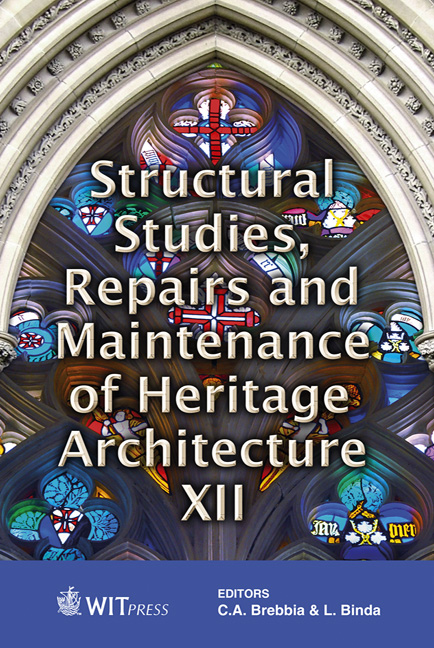The Monitoring Of World Heritage Sites During Construction Works In Their Vicinity: The Case Of Casa Milà And Of The Church Of Sagrada Familia In Barcelona, Spain
Price
Free (open access)
Transaction
Volume
118
Pages
18
Page Range
357 - 374
Published
2011
Size
5,381 kb
Paper DOI
10.2495/STR110301
Copyright
WIT Press
Author(s)
W. Jäger, T. Burkert, B. Boekhoff & T. Bakeer
Abstract
World Heritage Sites declared by UNESCO can be in danger when construction works are planned and implemented in their vicinity. Works above the ground are mostly excluded by the declaration due to the visible influence on the appearance of the World Heritage Building or Complex. However, in the case of street works or of the execution of underground buildings there is no limitation or prescription. These works can influence the stability or the load bearing behaviour of the building during the execution or afterwards. That’s why it is necessary to consider the interaction of the planned works with the monument. The time during the construction should also be considered for long term effects. The problems which can arise in such a case will be explained on the example of the construction of the high-speed train tunnel in the vicinity of Temple Sagrada Familia and to Casa Milà in Barcelona Spain. At the end conclusions are drawn for future declarations of World Heritage Monuments and necessary monitoring missions. The responsibility for the declaration as well as for the monitoring lies in the hands of the state site of the respective country which should consider the outcome of this case study very early. Keywords: UNESCO world heritage, monitoring, tunnelling works, structural behaviour, analysis, damage prevention.
Keywords
UNESCO world heritage, monitoring, tunnelling works, structural behaviour, analysis, damage prevention




